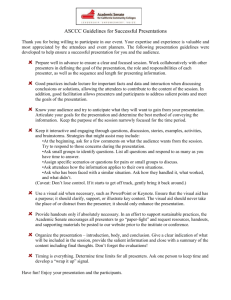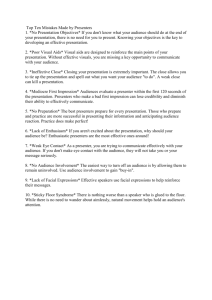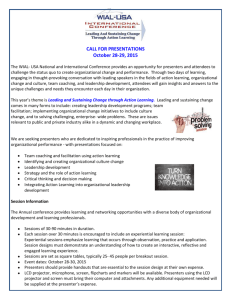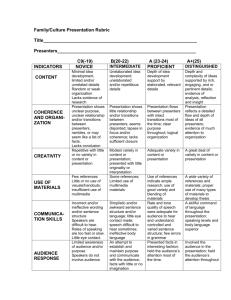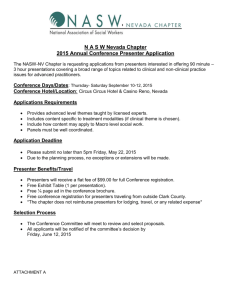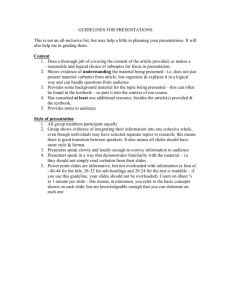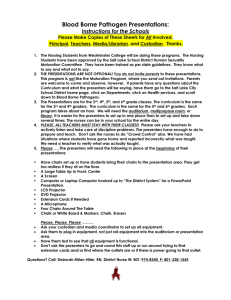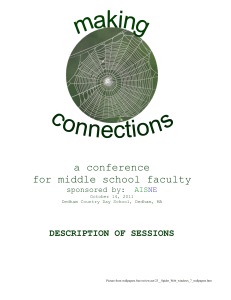Web conference preparation checklist
advertisement
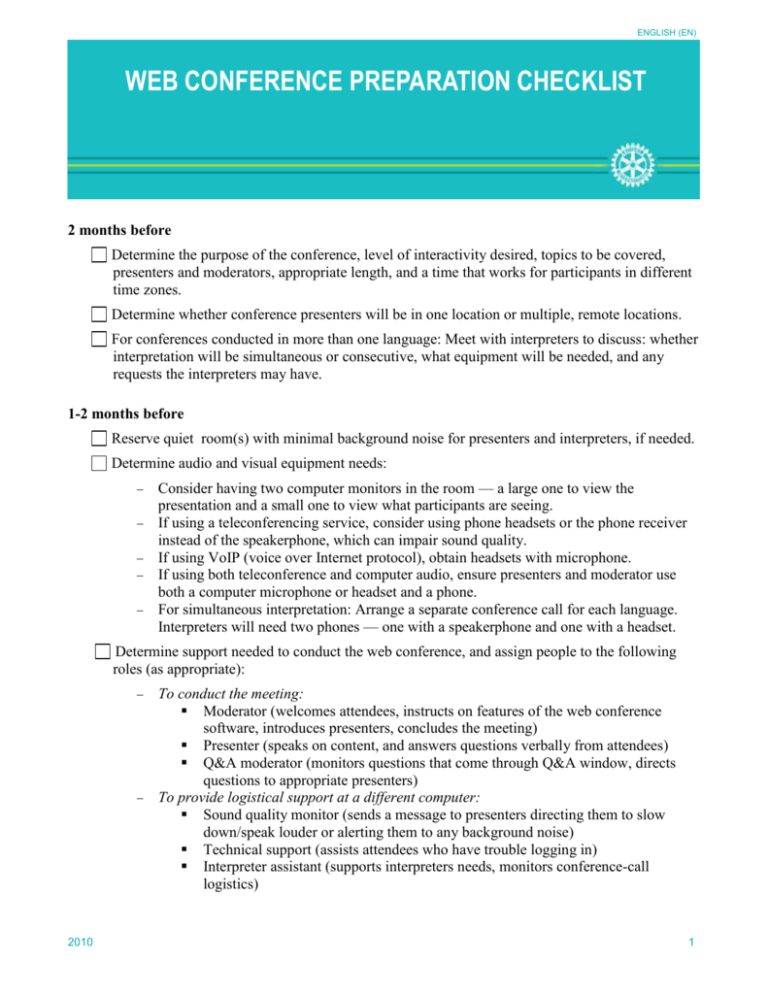
ENGLISH (EN) WEB CONFERENCE PREPARATION CHECKLIST 2 months before Determine the purpose of the conference, level of interactivity desired, topics to be covered, presenters and moderators, appropriate length, and a time that works for participants in different time zones. Determine whether conference presenters will be in one location or multiple, remote locations. For conferences conducted in more than one language: Meet with interpreters to discuss: whether interpretation will be simultaneous or consecutive, what equipment will be needed, and any requests the interpreters may have. 1-2 months before Reserve quiet room(s) with minimal background noise for presenters and interpreters, if needed. Determine audio and visual equipment needs: Consider having two computer monitors in the room — a large one to view the presentation and a small one to view what participants are seeing. If using a teleconferencing service, consider using phone headsets or the phone receiver instead of the speakerphone, which can impair sound quality. If using VoIP (voice over Internet protocol), obtain headsets with microphone. If using both teleconference and computer audio, ensure presenters and moderator use both a computer microphone or headset and a phone. For simultaneous interpretation: Arrange a separate conference call for each language. Interpreters will need two phones — one with a speakerphone and one with a headset. Determine support needed to conduct the web conference, and assign people to the following roles (as appropriate): 2010 To conduct the meeting: Moderator (welcomes attendees, instructs on features of the web conference software, introduces presenters, concludes the meeting) Presenter (speaks on content, and answers questions verbally from attendees) Q&A moderator (monitors questions that come through Q&A window, directs questions to appropriate presenters) To provide logistical support at a different computer: Sound quality monitor (sends a message to presenters directing them to slow down/speak louder or alerting them to any background noise) Technical support (assists attendees who have trouble logging in) Interpreter assistant (supports interpreters needs, monitors conference-call logistics) 1 Draft content Develop outline that accomplishes the goal of the conference. Determine whether you will use slides, screen sharing, white board, etc. Incorporate polls and other interactive activities throughout to keep attendees engaged. Have each presenter draft speaking points. Consider placing photos of presenters on the appropriate slides so attendees can see who is speaking. Or use a webcam for live video of presenters. Build-in time for questions and answers from participants. Send invitations to participants with login instructions for the web conference and teleconference, if applicable. Include a link to check whether their system is ready for web conferencing software. If using a teleconferencing service, include a list of phone numbers for each country from which participants are calling (provided by the teleconferencing service). Include the phone number and e-mail address of the technical support person. Translate invitation, if needed. Translate PowerPoint slides, if needed 1-2 weeks before Conduct at least two rehearsals with everyone who has a speaking or support role: Set up a mock web conference to use for your rehearsal. Rehearse the entire presentation with mock participants to test interactive software features and to look for areas that need improvement. Monitor the following components during the rehearsal: Voice quality Flow of presentation Transition between presenters and moderator Question and answer process Timing Send a reminder to participants the week of the meeting, either through web conferencing software or e-mail. Load the presentation the day before (or the day of) to incorporate any last minute changes. Insert polls as needed. Schedule a debriefing session with presenters and interpreters. Send PowerPoint slides to all participants in appropriate languages. 15-30 minutes before conference begins Log in to the conference call at least 15 minutes before the scheduled start time for the conference, and announce every minute to callers that the conference will begin shortly. Mute attendees’ phone if not allowing attendees to ask questions over the phone. Place audio instructions on the first slide. If using a teleconferencing service, include phone numbers and pass code that participants have to call. 2010 2 Consider spending the time before the training (about 15 minutes) providing oral instructions on how to log in online, in case attendees are having trouble. Use the first few minutes of the conference to explain the features of the phone (how to mute, unmute, etc.) and of web conferencing software. During the conference Consider polling participants at the start of the meeting to see whether they can hear the presenter. Explain how participants can ask a question, and then have participants practice by asking them to type a question or statement (about the weather, their expectations of the training, etc.). Eliminate background noise, especially if using a teleconferencing service. Speak slowly for participants whose first language is not English. After the conference Save a record of the comments and questions, and e-mail answers to any questions that were not addressed during the meeting. Survey participants immediately following the conference to get their feedback. Send a copy of the presentation to participants. Debrief with presenters and interpreters (as appropriate). 2010 3
